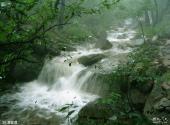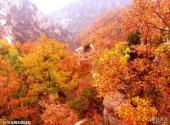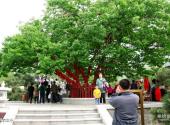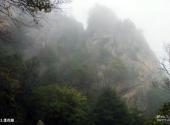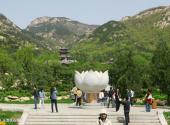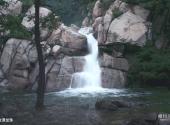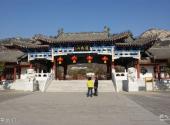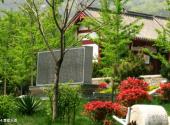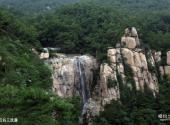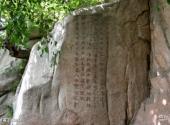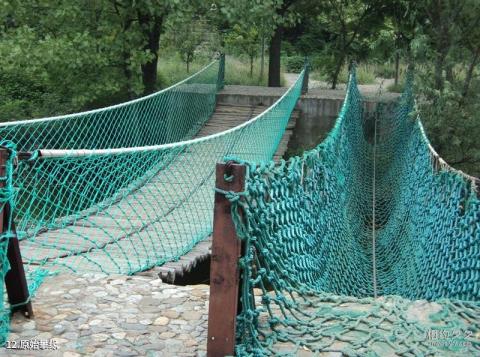
Scenic spot introduction:
Lianhua Mountain is a famous historical and cultural mountain with beautiful scenery and numerous historical sites. It was called Xinfu Mountain in ancient times. Here there are the "Xinfu Cypress" which has been passed down for 2,500 years, as well as ancient rocks with a history of 2.8 billion years. There are the remains of the palace where Emperor Hanwu sought immortality, and there is also the lotus seat statue of "the world's first natural Guanyin". Climbing Lianhua Mountain is not only a sightseeing and leisure, but also a kind of cultural influence and artistic enjoyment.Attractions distribution:
Xintai Lianhua Mountain Scenic Area stretches 15 kilometers from east to west, with a total area of 100 square kilometers. There are more than ten mountain ranges of different sizes in the area, and the main peak is 994 meters above sea level. Its natural landscape, which is renowned for its beautiful mountains, strange rocks, verdant forests and beautiful waters, has attracted literati and poets of all generations to come here for sightseeing.The Komatiite discovered in Lianhuashan Scenic Area is 2.8 billion years old. It is the only Archean ultramafic extrusive rock with a spiny structure in Asia and the oldest rock on Earth. Its geological and geophysical value is particularly noteworthy. The area has pure air, clear water, lush forests, and an ecological environment with a forest coverage rate of more than 95%. It is known as a "natural oxygen warehouse and health station." The scenic area was approved as a national forest park in 2005, and in 2006 it was successfully selected as a World Geopark together with Mount Tai.
Lianhua Mountain has a long history and profound cultural heritage. The earliest collection of Chinese poems, The Book of Songs, more than 2,500 years ago, contains the poem "Xinfu's Cypress", which reflects the historical fact that the State of Lu conquered the Lianhua Mountain area. Qin Shihuang offered sacrifices to the gods on Mount Tai and stayed here temporarily during his eastern tour. Emperor Wu of the Han Dynasty visited Lianhua Mountain, sought immortals and visited Taoism, built palaces and built a city, leaving behind many relics and legends, which indirectly showed the popularity of the Fangxiandao in the Lianhua Mountain area at that time. Since the Tang Dynasty, Buddhism has risen in Lianhua Mountain, and it has gradually become a sacred place of incense and a tourist attraction. During the Ming and Qing Dynasties, emperors came one after another, and literati and poets also came here to stay and linger, leaving behind a large number of exquisite poems and essays. Over time, this place has gradually developed into the largest Guanyin Taoist temple in northern China and a unique Buddhist cultural tourist area in Shandong Province, known as "Guanyin Shengjing, Putuo in the North".
The Guanyin pilgrimage is a major feature of Lotus Mountain tourism. Guanyin Temple , Taiping Temple , Yungu Temple In the main halls of many temples such as the Gaoquan Temple, Guanyin Bodhisattva is enshrined. In addition to the many functions of Guanyin Bodhisattva, the people also asked Guanyin Bodhisattva to add a function of giving birth to children, and set up a special Guanyin Hall for giving birth to children. The three major incense ceremonies of Guanyin's birthday, enlightenment and ordination on the 19th day of the second, sixth and ninth lunar months every year, and the folk temple fair on the 6th day of the sixth lunar month, from Guanyin Temple arrive Yungu Temple , pilgrims flocked in, the order was well maintained, and the scene was spectacular.
Scenic spot qualifications:
National 4A-level scenic spotScenic spot features:
Mountain climbing, Guanyin, praying, temples, mountains, strange peaks and rocksTour route:
Middle to upper west to lower west: Lianhuashan parking lot → Mountain gate → Fanyin Pavilion → Guanyin Temple , Guanyin Pavilion ( Guanyin Temple Welcome Ceremony) → Tongtian River → Taiping Temple → Upper Ropeway Station → Lower Ropeway Station → Yungu Waterfall → Yungu Temple (Pray for the New Year) → Yungu Temple Hotel lunch → Zimuquan → First Forest Bathing Area → Pilgrimage Tiancheng Guanyin → Seaview Pavilion → Climb the Promenade on the Other Shore → Lotus Hill Parking Lot
Best time to visit:
All seasons
Scenic spot location:
China > Shandong Province > Tai'an City > Xintai City
How to get there:
By bus: There is a direct bus to Lianhua Mountain at Xintai North Bus Station, which runs every 35 minutes and costs about 7 yuan. It is 12 kilometers from the city to the scenic area, and it costs about 50 yuan to take a taxi.
Self-driving: 1. Beijing-Shanghai Expressway: From Jinan, get off at Guodu Exit; from Linyi, get off at Xintai Exit;
2. Binxin Expressway: Exit at Xintai;
3. Jiqing Expressway South Line: From Laiwu section, turn to Binxin Expressway and get off at Xintai Exit.
Scenic area map:
Click to expand the scenic area map
Lotus Mountain Ticket Price:
Weekdays: 80 yuan/person
On the three major Buddhist ceremonies on the 19th day of the second lunar month, the 19th day of the sixth lunar month, and the 19th day of the ninth lunar month, and from the Spring Festival's Eve to the 15th day of the first lunar month, the entrance ticket is 10 yuan per ticket. On the 8th day of the fourth lunar month, the Buddha Bathing and Releasing Life Ceremony (except during the May Day holiday), and during the Lotus Mountain "June 6" folk temple fair from the first to the sixth day of the sixth lunar month, the entrance ticket is half-price.
Scenic area opening hours:
7:00-17:00

